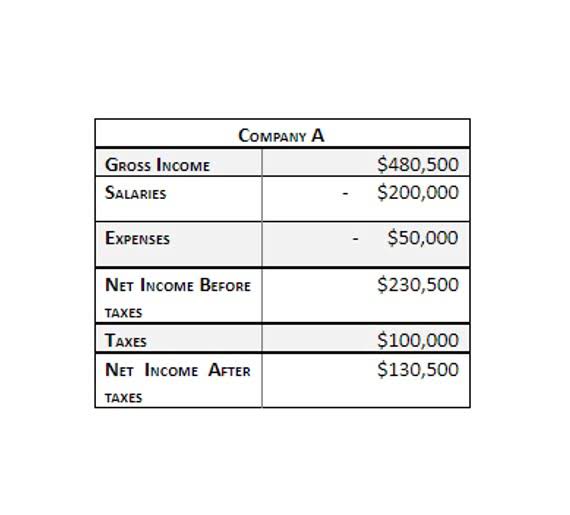
The company cannot utilize the retained earnings until its shareholders approve it. Thus, retained earnings are credited to the books of accounts when increased and debited when decreased. If the balance of retained earnings is negative, then it is referred to as accumulated losses/deficit, or retained losses. Negative retained earnings occur if the dividends a company pays out are greater than the amount of its earnings generated since the foundation of the company.
Retained earnings at closing entry

Dividend payments can vary widely, depending on the company and the firm’s industry. Established businesses that generate consistent earnings make larger dividend payouts, on average, because they have larger retained earnings balances in place. However, a startup business may retain all of the company earnings to fund growth. Investors pay close attention to retained earnings since the account shows how much money is available for reinvestment back in the company and how much is available to pay dividends to shareholders. According to FASB Statement No. 16, prior period adjustments consist almost entirely of corrections of errors in previously published financial statements.

What Happens to Shareholder’s Equity When the Firm Issues More Shares?
Retained earnings are usually considered a type of equity as seen by their inclusion in the shareholder’s equity section of the balance sheet. Though retained earnings are not an asset, they can be used to purchase assets in order to help is retained earning a debit or credit a company grow its business. Your Bench account’s Overview page offers an at-a-glance summary of your income statement and balance sheet, allowing you to review your profitability and stay on top of your cash flow from month to month.
Revenue vs. Retained Earnings: An Overview
The income statement (or profit and loss) is the first financial statement that most business owners review when they need to calculate retained earnings. This document calculates net income, which you’ll need to calculate your retained earnings balance later. Though cash dividends are the most common payout, remember that stock dividends are another option. Unlike cash payments, stock dividends don’t immediately impact a company’s bottom line. Retained earnings are net income (profits) that a company saves for future use or reinvests back into company operations. You should report retained earnings as part of shareholders’ equity on the balance sheet.
- J.B. Maverick is an active trader, commodity futures broker, and stock market analyst 17+ years of experience, in addition to 10+ years of experience as a finance writer and book editor.
- A business entity can have a negative retained earnings balance if it has been incurring net losses or distributing more dividends than what is there in the retained earnings account over the years.
- Retained earnings are also the key component of shareholder’s equity that helps a company determine its book value.
- HP Inc. earned a net profit of 500,000 during the accounting period Jan-Dec 20×1.
- Ultimately, the company’s management and board of directors decides how to use retained earnings.
- Or a board of directors may decide to use assets resulting from net income for plant expansion rather than for cash dividends.
How to Calculate the Effect of a Stock Dividend on Retained Earnings?

Non-cash items such as write-downs or impairments and stock-based compensation also affect the account. It’s important to note that retained earnings are cumulative, meaning the ending retained earnings balance for one accounting period becomes the beginning retained earnings balance for the next period. Retained earnings, on the other hand, refer to the portion of a company’s net profit that hasn’t been paid out to its shareholders as dividends.
Income statement sample
This profit is often paid out to shareholders, but it can also be reinvested back into the company for growth purposes. These earnings could be used to fund an expansion or pay dividends to shareholders at a later date. Retained earnings are related to net income because they increase or decrease depending on whether a company has a net income or net loss for the year. Since stock dividends are dividends given in the form of shares in place of cash, these lead to an increased number of shares outstanding for the company. That is, each shareholder now holds an additional number of shares of the company. As stated earlier, dividends are paid out of retained earnings of the company.
- Business owners should use a multi-step income statement that also separates the cost of goods sold (COGS) from operating expenses.
- If the company makes cash sales, a company’s balance sheet reflects higher cash balances.
- However, once you debit the amount from dividends, that money still needs to be credited to the appropriate account.
- Retained earnings are an equity balance and as such are included within the equity section of a company’s balance sheet.
- However, this form of capital reflects higher available equity that may generate higher long-term revenues and, indirectly, increased retained earnings.
- A company indicates a deficit by listing retained earnings with a negative amount in the stockholders’ equity section of the balance sheet.

Here, we shall discuss retained earnings, debit, and credit so that we can understand how the retained earnings are recorded and if they are debit or credit. The amount of retained earnings a company has generally indicates that the company is profitable and is therefore an indication of the positive performance of the company. However, there are a lot of profitable businesses that might have a low balance in their retained earnings account.
- The figure is calculated at the end of each accounting period (monthly/quarterly/annually).
- In addition to considering revenue, it is impacted by the company’s cost of goods sold, operating expenses, taxes, interest, depreciation, and other costs.
- More mature companies generate more net income and give more to shareholders.
- It also indicates that a company has more funds to reinvest back into the future growth of the business.
- Retained earnings are left over profits after accounting for dividends and payouts to investors.
- Normal, recurring corrections and adjustments, which follow inevitably from the use of estimates in accounting practice, are not treated as prior period adjustments.
- While a t-shirt can remain essentially unchanged for a long period of time, a computer or smartphone requires more regular advancement to stay competitive within the market.








